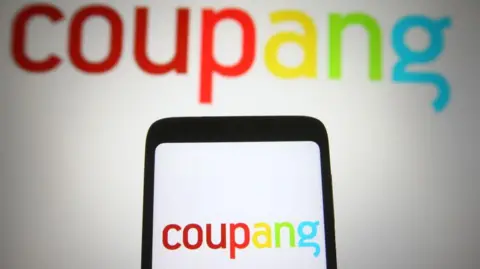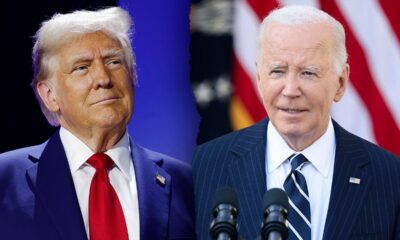Business
‘Aggressive economic leverage’: JD Vance says Trump applied secondary tariffs on India to force Russia to stop war; ‘harder for Russians to…’ – Times of India

US Vice President JD Vance has said that Donald Trump applied secondary tariffs on India to force Russia to stop the war with Ukraine. Calling it ‘aggressive economic leverage’, Vance said that the measure would make it difficult for Russia to get richer by selling its crude oil.Vance indicated that US President Donald Trump has utilised strong economic measures, including ‘secondary tariffs on India’ as pressure tactics to halt Russia’s military operations in Ukraine.The Trump government has consistently expressed disapproval of India’s purchase of discounted Russian oil. However, it is notable that Washington has refrained from criticising China, despite it being the primary purchaser of Russian oil.
Trump’s pressure tactics on Russia – JD Vance explains
During an exclusive conversation with NBC News’ “Meet the Press”, Vance expressed that these measures would diminish Russia’s ability to profit from its petroleum exports.According to a PTI report quoting NBC News, Vance expressed optimism about America’s capability to facilitate peace between Russia and Ukraine, despite certain complications arising after President Trump’s recent discussions with Russian President Vladimir Putin.Also Read | ‘We have red lines…’: Jaishankar’s clear message on India-US trade deal; slams ‘sanctions’ on Russia oil, says ‘if you don’t like it, don’t buy it’“We believe we’ve already seen some significant concessions from both sides, just in the last few weeks,” Vance said in the interview.When questioned by moderator Kristen Welker about the pressure on Russia in the absence of ‘imposing new sanctions’ and how to facilitate dialogue between Zelenskyy and Russia to halt the bombardment, Vance provided his perspective.He explained that Trump implemented ‘aggressive economic leverage’, including ‘secondary tariffs on India’, to try to make it harder for the Russians to get rich from their oil economy.”Vance elaborated that the message to Russia was clear: they could rejoin the global economy by stopping the war, but their isolation would persist if they continued their aggressive actions.
How has India reacted to US secondary tariffs?
India has consistently emphasised that its decisions regarding energy acquisition, including from Russia, are based on domestic requirements and market conditions.Following Trump’s decision to increase tariffs on Indian products to 50%, including additional 25 % duties on India’s Russian crude oil purchases, the relationship between New Delhi and Washington has deteriorated.Washington claims that India’s procurement of Russian crude oil is supporting Moscow’s military campaign in Ukraine, an accusation that India firmly denies.Also Read | Over 20% of Russia’s war-period crude exports! India bought about Rs 13.39 lakh crore in Russian oil; trails China’s Rs 193 billionFollowing Western nations’ sanctions on Moscow and their rejection of Russian supplies due to its Ukraine invasion in February 2022, India began purchasing discounted Russian oil.External Affairs Minister S Jaishankar on Saturday said, “It’s funny to have people who work for a pro-business American administration accusing other people of doing business.”This statement was in response to American criticism regarding India’s crude oil purchases.“That’s really curious. If you have a problem buying oil or refined products from India, don’t buy it. Nobody forces you to buy it. But Europe buys, America buys, so you don’t like it, don’t buy it,” Jaishankar said.
Business
Stock Market Live Updates: Sensex, Nifty Hit Record Highs; Bank Nifty Climbs 60,000 For The First Time

Stock Market News Live Updates: Indian equity benchmarks opened with a strong gap-up on Monday, December 1, touching fresh record highs, buoyed by a sharp acceleration in Q2FY26 GDP growth to a six-quarter peak of 8.2%. Positive cues from Asian markets further lifted investor sentiment.
The BSE Sensex was trading at 85,994, up 288 points or 0.34%, after touching an all-time high of 86,159 in early deals. The Nifty 50 stood at 26,290, higher by 87 points or 0.33%, after scaling a record intraday high of 26,325.8.
Broader markets also saw gains, with the Midcap index rising 0.27% and the Smallcap index advancing 0.52%.
On the sectoral front, the Nifty Bank hit a historic milestone by crossing the 60,000 mark for the first time, gaining 0.4% to touch a fresh peak of 60,114.05.
Meanwhile, the Metal and PSU Bank indices climbed 0.8% each in early trade.
Global cues
Asia-Pacific markets were mostly lower on Monday as traders assessed fresh Chinese manufacturing data and increasingly priced in the likelihood of a US Federal Reserve rate cut later this month.
According to the CME FedWatch Tool, markets are now assigning an 87.4 per cent probability to a rate cut at the Fed’s December 10 meeting.
China’s factory activity unexpectedly slipped back into contraction in November, with the RatingDog China General Manufacturing PMI by S&P Global easing to 49.9, below expectations of 50.5, as weak domestic demand persisted.
Japan’s Nikkei 225 slipped 1.6 per cent, while the broader Topix declined 0.86 per cent. In South Korea, the Kospi dropped 0.30 per cent and Australia’s S&P/ASX 200 was down 0.31 per cent.
US stock futures were steady in early Asian trade after a positive week on Wall Street. On Friday, in a shortened post-Thanksgiving session, the Nasdaq Composite climbed 0.65 per cent to 23,365.69, its fifth consecutive day of gains.
The S&P 500 rose 0.54 per cent to 6,849.09, while the Dow Jones Industrial Average added 289.30 points, or 0.61 per cent, to close at 47,716.42.
Business
South Korea: Online retail giant Coupang hit by massive data leak

Osmond ChiaBusiness reporter
 Getty Images
Getty ImagesSouth Korea’s largest online retailer, Coupang, has apologised for a massive data breach potentially involving nearly 34 million local customer accounts.
The country’s internet authority said that it is investigating the breach and that details from the millions of accounts have likely been exposed.
Coupang is often described as South Korea’s equivalent of Amazon.com. The breach marks the latest in a series of data leaks at major firms in the country, including its telecommunications giant, SK Telecom.
Coupang told the BBC it became aware of the unauthorised access of personal data of about 4,500 customer accounts on 18 November and immediately reported it to the authorities.
But later checks found that some 33.7 million customer accounts – all in South Korea – were likely exposed, said Coupang, adding that the breach is believed to have begun as early as June through a server based overseas.
The exposed data is limited to name, email address, phone number, shipping address and some order histories, Coupang said.
No credit card information or login credentials were leaked. Those details remain securely protected and no action is required from Coupang users at this point, the firm added.
The number of accounts affected by the incident represents more than half of South Korea’s roughly-52 million population.
Coupang, which is founded in South Korea and headquartered in the US, said recently that it had nearly 25 million active users.
Coupang apologised to its customers and warned them to stay alert to scams impersonating the company.
The firm did not give details on who is behind the breach.
South Korean media outlets reported on Sunday that a former Coupang employee from China was suspected of being behind the breach.
The authorities are assessing the scale of the breach as well as whether Coupang had broken any data protection safety rules, South Korea’s Ministry of Science and ICT said in a statement.
“As the breach involves the contact details and addresses of a large number of citizens, the Commission plans to conduct a swift investigation and impose strict sanctions if it finds a violation of the duty to implement safety measures under the Protection Act.”
The incident marks the latest in a series of breaches affecting major South Korean companies this year, despite the country’s reputation for stringent data privacy rules.
SK Telecom, South Korea’s largest mobile operator, was fined nearly $100m (£76m) over a data breach involving more than 20 million subscribers.
In September, Lotte Cards also said the data of nearly three million customers was leaked after a cyber-attack on the credit card firm.
Business
Agency workers covering for Birmingham bin strikers to join picket lines

Agency workers hired to cover Birmingham bin strikers will join them on picket lines on Monday, a union has said.
A rally will be held by Unite The Union at Smithfield Depot on Pershore Street, Birmingham, on Monday morning to mark the first day of strike action by agency refuse workers.
Unite said the Job & Talent agency workers had voted in favour of strike action “over bullying, harassment and the threat of blacklisting at the council’s refuse department two weeks ago”.
The union said the number of agency workers who will join the strike action is “growing daily”.
Strikes by directly-employed bin workers, which have been running since January, could continue beyond May’s local elections.
The directly-employed bin workers voted in favour of extending their industrial action mandate earlier this month.
Unite general secretary Sharon Graham said: “Birmingham council will only resolve this dispute when it stops the appalling treatment of its workforce.
“Agency workers have now joined with directly-employed staff to stand up against the massive injustices done to them.
“Instead of wasting millions more of council taxpayers’ money fighting a dispute it could settle justly for a fraction of the cost, the council needs to return to talks with Unite and put forward a fair deal for all bin workers.
“Strikes will not end until it does.”
-

 Sports1 week ago
Sports1 week agoWATCH: Ronaldo scores spectacular bicycle kick
-

 Entertainment1 week ago
Entertainment1 week agoWelcome to Derry’ episode 5 delivers shocking twist
-

 Politics1 week ago
Politics1 week agoWashington and Kyiv Stress Any Peace Deal Must Fully Respect Ukraine’s Sovereignty
-

 Business1 week ago
Business1 week agoKey economic data and trends that will shape Rachel Reeves’ Budget
-

 Tech6 days ago
Tech6 days agoWake Up—the Best Black Friday Mattress Sales Are Here
-

 Fashion7 days ago
Fashion7 days agoCanada’s Lululemon unveils team Canada kit for Milano Cortina 2026
-

 Tech6 days ago
Tech6 days agoThe Alienware Aurora Gaming Desktop Punches Above Its Weight
-

 Politics1 week ago
Politics1 week ago53,000 Sikhs vote in Ottawa Khalistan Referendum amid Carney-Modi trade talks scrutiny













